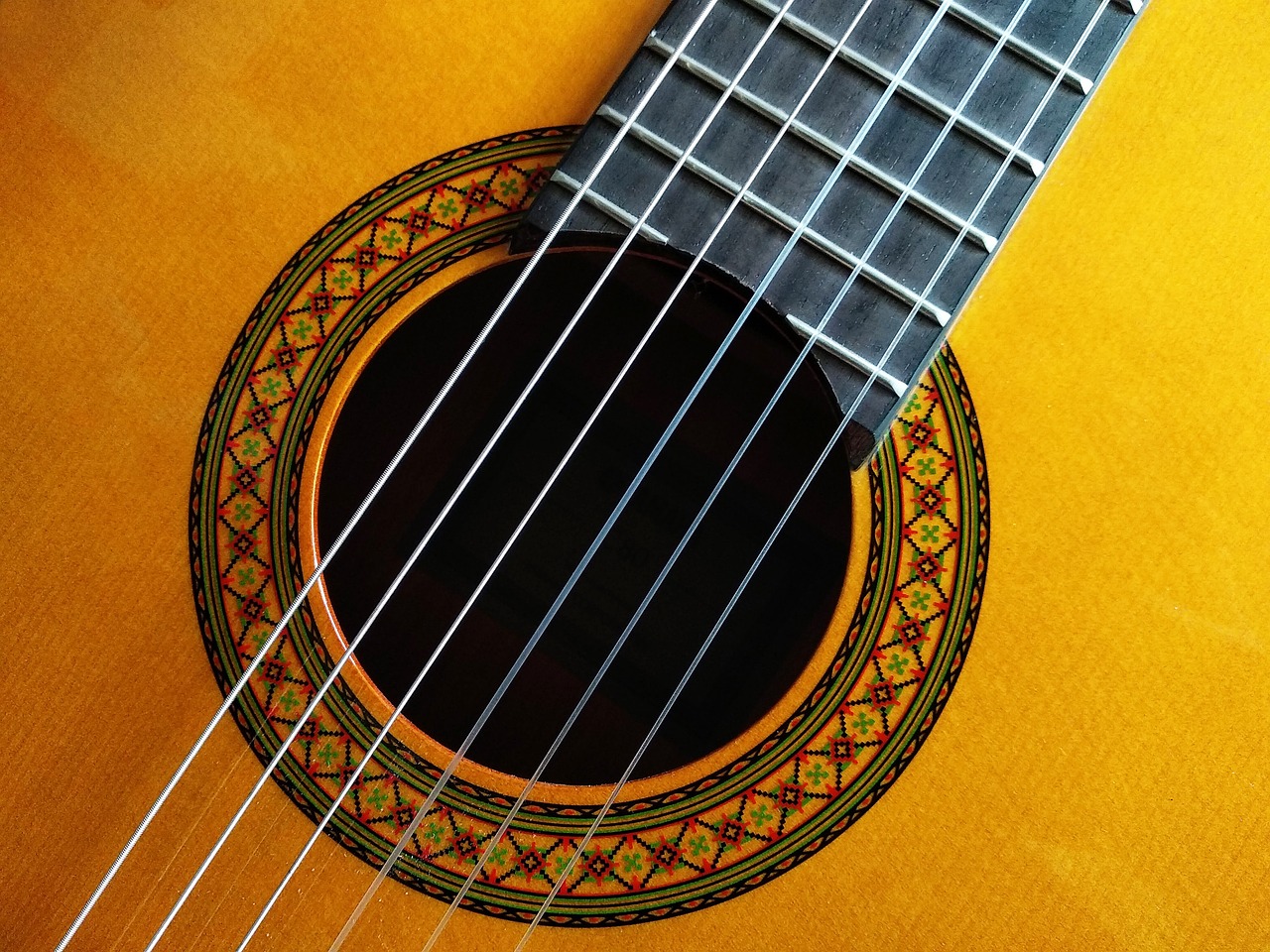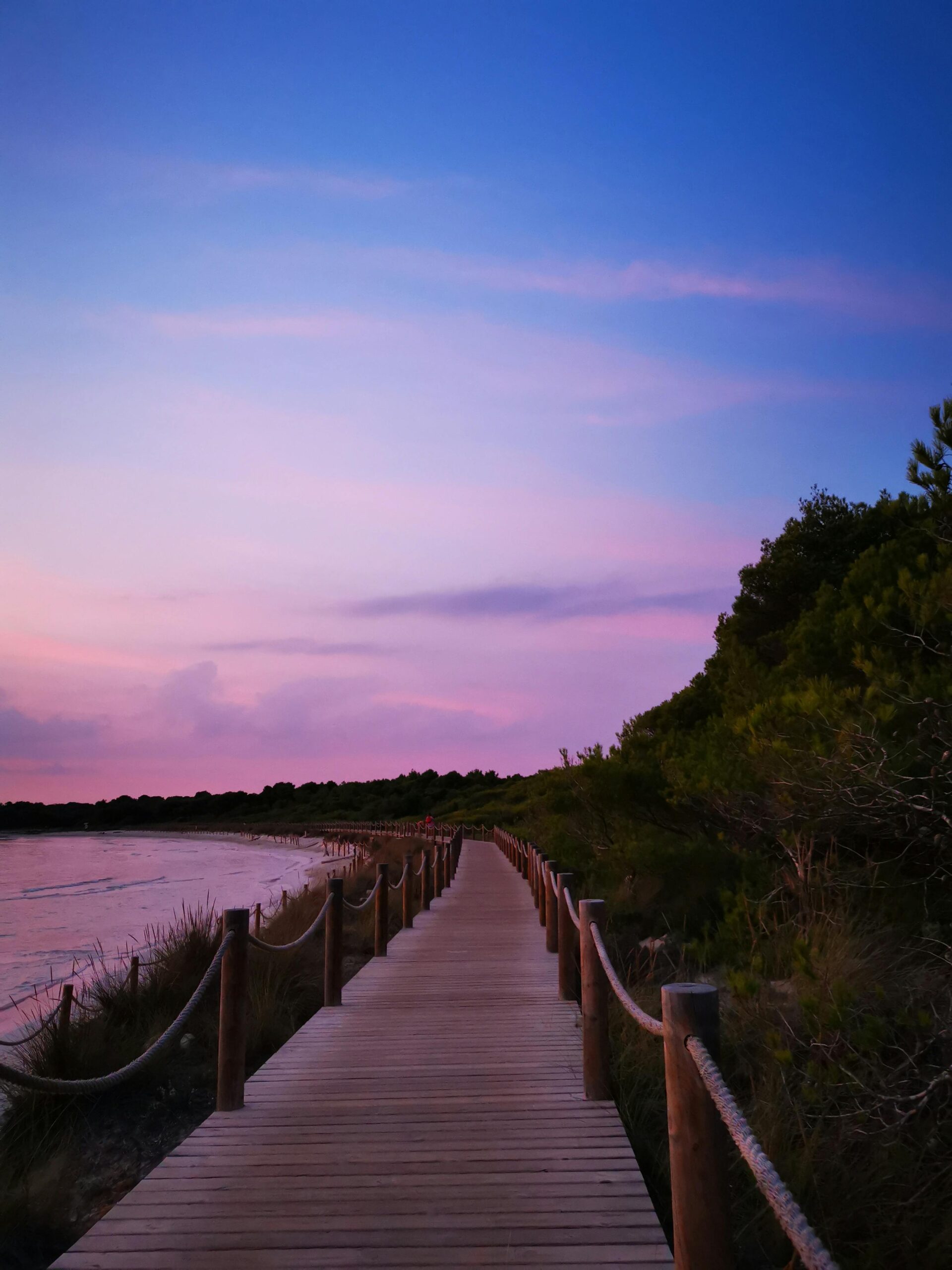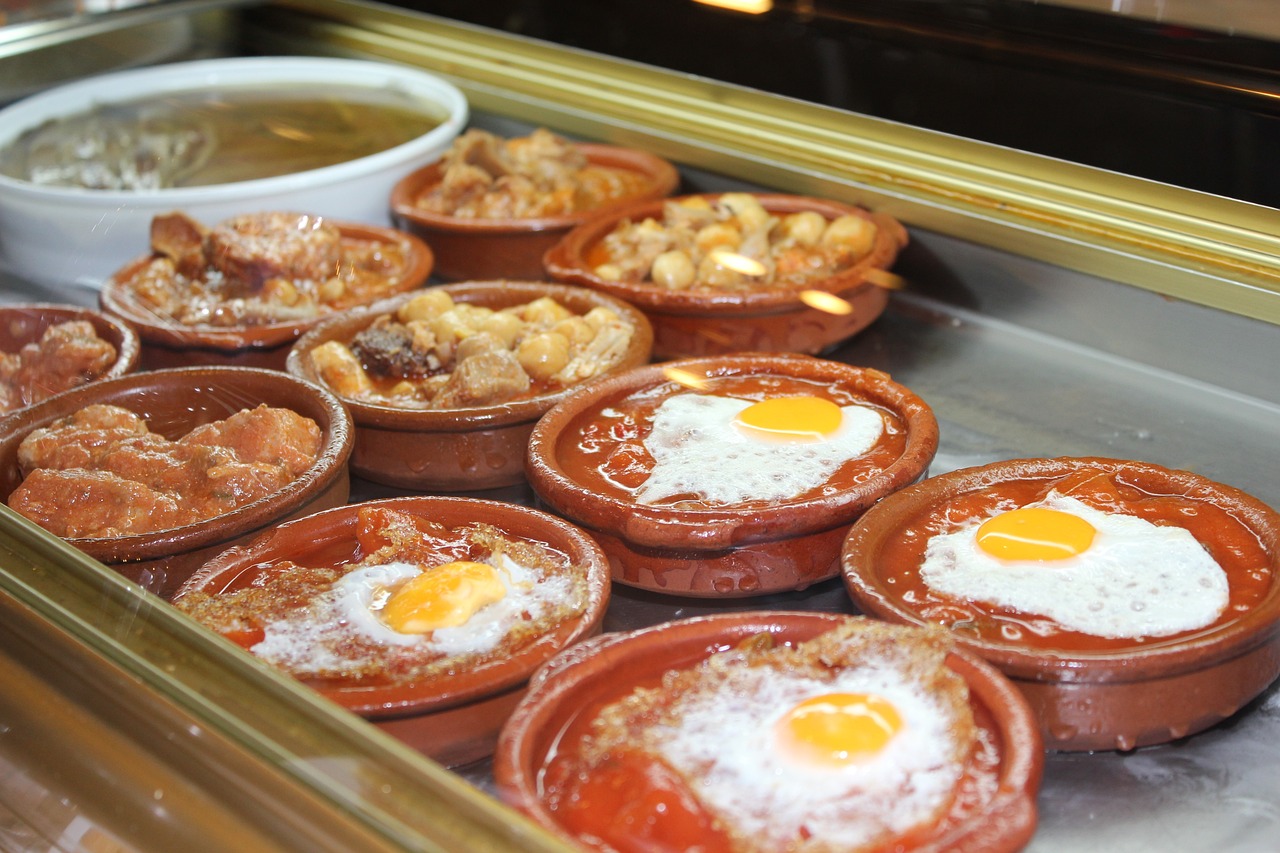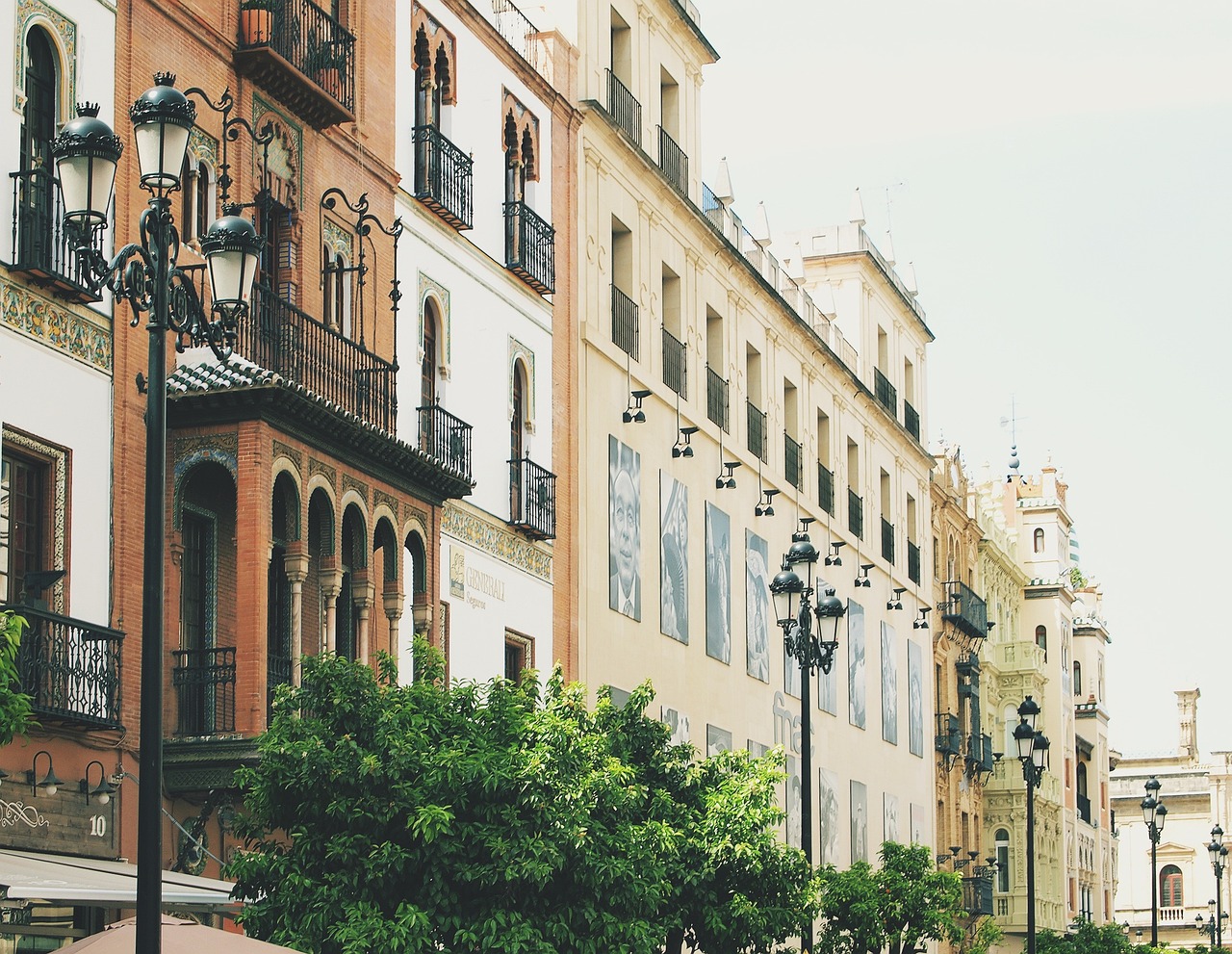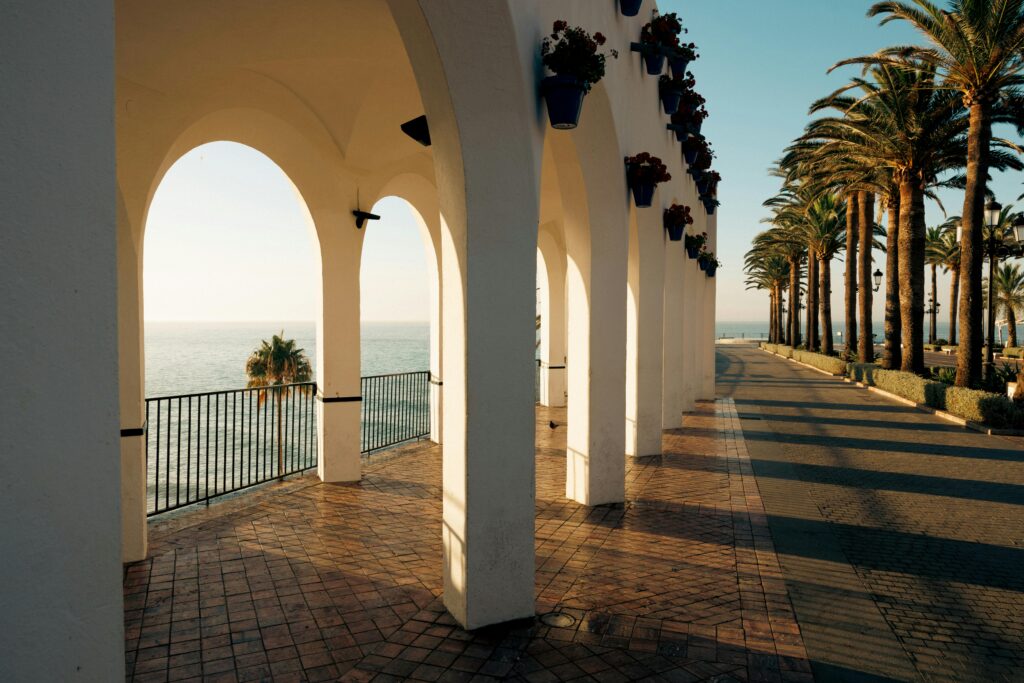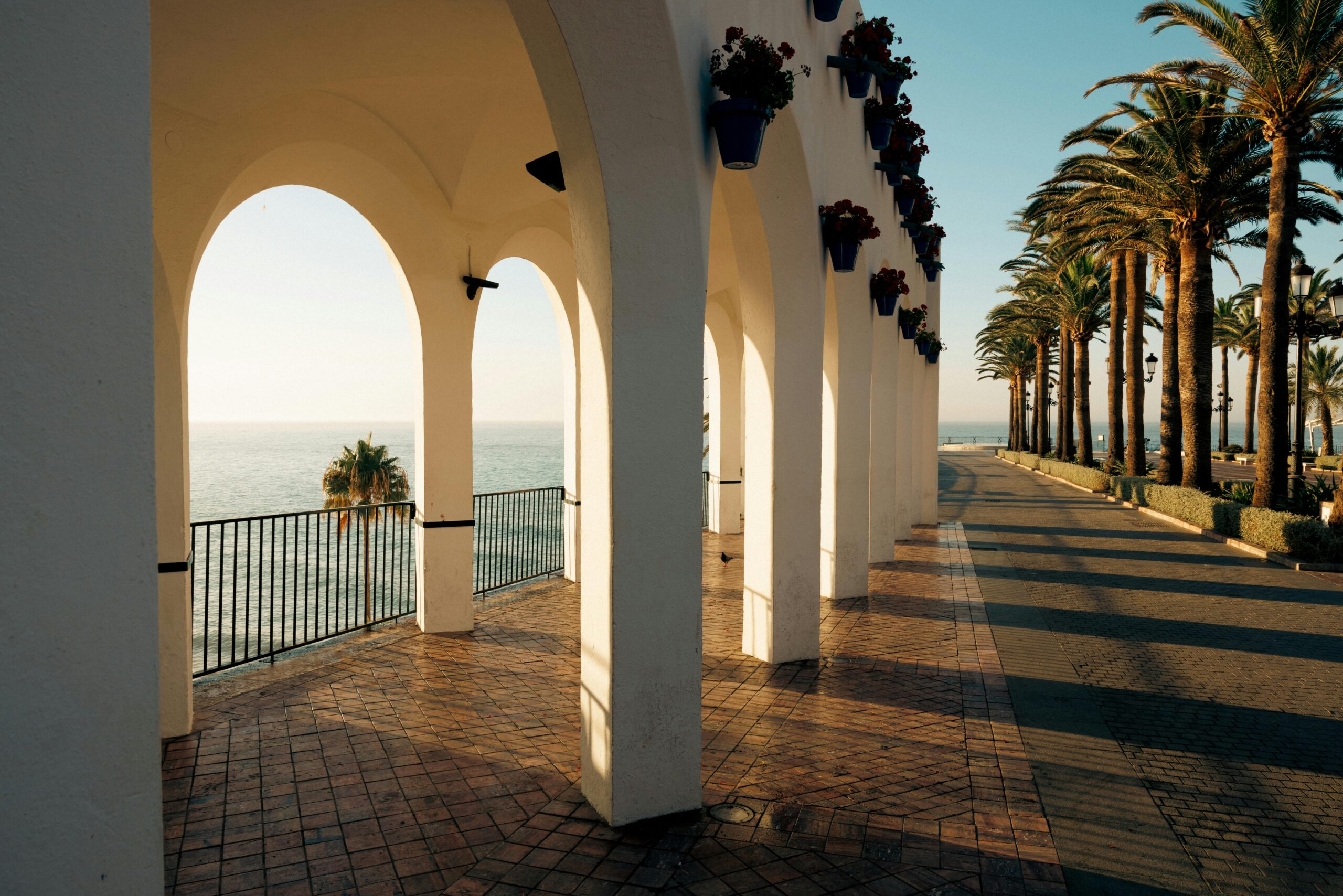
The Best Walking Trails in Menorca: A Nature Lover’s Guide
- Menorca, Nature
- septiembre 6, 2024
Hanna Smith
Writer & Blogger
Menorca, a UNESCO Biosphere Reserve, is a haven for nature enthusiasts and hikers. The island’s diverse landscapes, from rugged coastlines to lush forests, offer a wide range of walking trails that allow you to explore its natural beauty up close. Whether you’re looking for a leisurely stroll along the beach or a challenging hike through the hills, Menorca’s walking trails provide something for everyone. Here’s a guide to some of the best walking trails on the island.
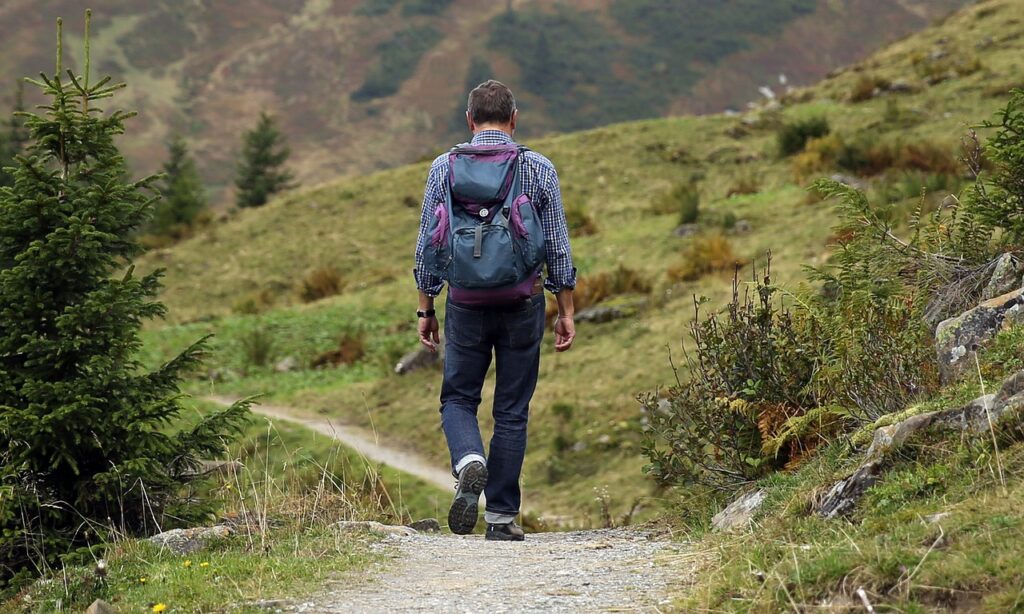
Cami de Cavalls
The Cami de Cavalls is undoubtedly Menorca’s most famous and extensive walking trail. This ancient path, which encircles the entire island, stretches for about 185 kilometers and offers a unique way to explore Menorca’s varied landscapes. The trail was originally used for defensive purposes, allowing soldiers to patrol the coastline on horseback, but today it is a popular route for hikers, cyclists, and horseback riders.
The Cami de Cavalls is divided into 20 stages, each varying in length and difficulty, making it accessible to walkers of all levels. Some sections take you along stunning cliffs with breathtaking views of the Mediterranean, while others lead you through shaded pine forests, past hidden coves, and across sandy beaches. Highlights of the trail include the dramatic cliffs of Cala Mitjana, the secluded beaches of Cala Macarella and Cala Turqueta, and the wild, windswept landscapes of the northern coast.
Whether you choose to tackle the entire trail or just a few sections, the Cami de Cavalls is an unforgettable way to experience Menorca’s natural beauty. Be sure to bring plenty of water, sun protection, and a camera to capture the stunning scenery.
Monte Toro
For those seeking panoramic views of the entire island, a hike to the summit of Monte Toro is a must. At 358 meters, Monte Toro is the highest point in Menorca, offering spectacular 360-degree views of the island and the surrounding sea. The hike to the summit is relatively short but steep, making it a rewarding challenge for hikers of all levels.
The trail to Monte Toro begins in the town of Es Mercadal, located in the center of the island. As you ascend, you’ll pass through a mix of pine forests and open landscapes, with occasional glimpses of the views to come. At the summit, you’ll find the Santuario de la Virgen del Toro, a small sanctuary dedicated to Menorca’s patron saint. There’s also a café where you can relax and enjoy a drink while taking in the views.
On a clear day, you can see as far as the coastlines of Mallorca and the neighboring Balearic Islands. The hike to Monte Toro is not only a chance to enjoy the stunning scenery but also to connect with the spiritual and cultural heritage of Menorca.
Cala Galdana to Cala Mitjana
For a more leisurely coastal walk, the trail from Cala Galdana to Cala Mitjana is a perfect choice. This short but scenic trail takes you along some of Menorca’s most beautiful coastline, offering stunning views of the turquoise waters and rugged cliffs.
The trail begins at the popular beach of Cala Galdana, one of the largest and most developed beaches on the island. From there, it’s a relatively easy walk along a well-marked path to Cala Mitjana, a smaller and more secluded cove known for its crystal-clear waters and fine white sand. Along the way, you’ll pass through pine forests and coastal scrub, with plenty of opportunities to stop and take in the views.
Cala Mitjana is a great spot to relax and enjoy a swim after your walk, and if you’re feeling adventurous, you can continue along the trail to the even more secluded Cala Mitjaneta, a tiny cove just a short distance away.
S’Albufera des Grau Natural Park
S’Albufera des Grau Natural Park is Menorca’s most important protected natural area, covering more than 5,000 hectares of wetlands, forests, and coastline. The park is a paradise for birdwatchers and nature lovers, with a wide variety of walking trails that allow you to explore its diverse habitats.
One of the most popular trails in the park is the Cami de Cavalls section that passes through S’Albufera des Grau. This trail takes you through the heart of the park, past the lagoon where you can spot numerous bird species, including herons, egrets, and ospreys. The trail also offers stunning views of the coast, with several lookout points where you can stop and enjoy the scenery.
For a shorter walk, the Es Grau Lagoon Trail is a great option. This easy trail takes you around the edge of the lagoon, offering plenty of opportunities to observe the park’s wildlife up close. The trail is well-marked and suitable for walkers of all ages, making it a great choice for families.
Cova des Coloms
For a more adventurous hike, consider the trail to Cova des Coloms, also known as “La Catedral” (The Cathedral). This impressive cave, located near the village of Es Migjorn Gran, is one of the largest in Menorca and is a popular destination for hikers and nature enthusiasts.
The trail to Cova des Coloms takes you through a beautiful and varied landscape, including pine forests, rocky ravines, and open fields. The cave itself is a natural wonder, with a towering entrance and a vast interior chamber that is more than 24 meters high. The cave was used for religious rituals by the island’s prehistoric inhabitants, adding an element of historical intrigue to your hike.
The trail to Cova des Coloms is moderately challenging, with some steep sections and rocky terrain, so be sure to wear sturdy shoes and bring plenty of water. The effort is well worth it, as the cave and the surrounding landscape are truly awe-inspiring.
Tips for Walking in Menorca
- Wear Appropriate Footwear: Sturdy walking shoes are recommended, especially for trails with rocky or uneven terrain.
- Stay Hydrated: The Mediterranean sun can be intense, so be sure to bring plenty of water, especially during the summer months.
- Respect Nature: Stick to marked trails, avoid disturbing wildlife, and take any trash with you to help preserve Menorca’s natural beauty.
- Check the Weather: Some trails can be slippery after rain, so check the weather forecast before setting out, and be prepared for changing conditions.
Conclusion
Menorca’s walking trails offer a fantastic way to explore the island’s natural beauty, from its stunning coastline to its rugged interior. Whether you’re hiking the historic Cami de Cavalls, taking in the panoramic views from Monte Toro, or exploring the diverse habitats of S’Albufera des Grau, you’ll find that Menorca’s landscapes are as varied as they are beautiful. So lace up your boots, grab your camera, and set out on an adventure to discover the best of Menorca on foot.
Recent Posts
- All Posts
- Alicante
- Barcelona
- Beaches
- Bilbao
- Castles
- Cordoba
- Culture
- Day Trips
- Family
- Gastronomy
- Granada
- Hidden Gems
- Ibiza
- Madrid
- Mallorca
- Menorca
- Nature
- Nightlife
- Oviedo
- Seville
- Shopping
- Toledo
- Travel
- Valencia
- Zaragoza

Are you traveling with children?
Take some ideas of plans so you can enjoy the trip as a family. Ideal for everyone!
Category
- Alicante (15)
- Barcelona (15)
- Beaches (11)
- Bilbao (15)
- Castles (2)
- Cordoba (14)
- Culture (59)
- Day Trips (8)
- Family (13)
- Gastronomy (51)
- Granada (15)
- Hidden Gems (15)
- Ibiza (16)
- Madrid (15)
- Mallorca (5)
- Menorca (16)
- Nature (4)
- Nightlife (8)
- Oviedo (15)
- Seville (17)
- Shopping (6)
- Toledo (14)
- Travel (1)
- Valencia (16)
- Zaragoza (13)
Tags
- Adventure (3)
- ARt (5)
- Brunch (1)
- Churchs (5)
- Coffee (2)
- Day Trips (2)
- Festivals (2)
- Flamenco (3)
- Garden (1)
- Hidden Gems (10)
- Hiking (1)
- Historical (18)
- Market (4)
- Museums (2)
- Music (2)
- Nerja (1)
- Parks (3)
- Patios (3)
- Pintxos (2)
- Relax (1)
- Rooftops (3)
- Seafood (3)
- Snorkel (1)
- Spring (1)
- Tapas (8)
- Traditional (1)
- Trail (3)
- Trip (2)
- Viewpoints (2)
- Walking (4)
- Weekend (1)
- Wine (1)
- Winter (1)
Top 10 Best Christmas Markets in Spain: Festive Guide 2024 Travel noviembre 19, 2024 Olivia Jones Writer & Blogger Spain, with its rich cultural heritage and festive spirit, transforms into a winter wonderland during the holiday season. From bustling urban centers to quaint historic towns, the country hosts a plethora of Christmas markets that captivate both locals and visitors. These markets, known as «mercados de Navidad,» offer a unique blend of traditional crafts, delectable treats, and vibrant entertainment, making them a must-visit during the festive period. 1. Plaza Mayor Christmas Market, Madrid Madrid’s Plaza Mayor, a historic square dating back to the 17th century, becomes the heart of the city’s Christmas celebrations. From late November to December 31st, the square is adorned with over 100 stalls offering a variety of items, from handcrafted ornaments to traditional nativity scene figures. The market is renowned for its festive atmosphere, with twinkling lights illuminating the square and street performers entertaining the crowds. Visitors can indulge in seasonal delicacies such as «turrón» (nougat) and «polvorones» (almond cookies), making it a delightful experience for all ages. Destinos Europeos Excepcionales 2. Fira de Santa Llúcia, Barcelona Established in 1786, the Fira de Santa Llúcia is Barcelona’s oldest and most iconic Christmas market. Located in front of the majestic Barcelona Cathedral, the market features over 280 stalls selling a wide array of products, including handcrafted gifts, decorations, and traditional Catalan items. A unique aspect of this market is the «caganer,» a traditional Catalan figurine often included in nativity scenes. The market also hosts various activities, such as workshops and musical performances, providing a comprehensive festive experience. España 3. Mercado de Navidad de Plaza del Pilar, Zaragoza Zaragoza’s Plaza del Pilar transforms into a festive hub from early December to early January. The market boasts a large ice-skating rink, a nativity scene with live animals, and numerous stalls offering artisanal crafts and local gastronomy. The backdrop of the Basilica del Pilar adds to the enchanting atmosphere, making it a picturesque destination for holiday festivities. Sensational Spain 4. Mercado de Navidad de la Plaza del Ayuntamiento, Valencia Valencia’s central square hosts a charming Christmas market featuring stalls with handcrafted goods, festive decorations, and local delicacies. The market is known for its lively ambiance, with street musicians and performers adding to the festive spirit. Visitors can also enjoy the beautifully decorated Christmas tree and the traditional nativity scene displayed in the square. Sensational Spain 5. Feria del Belén, Seville Seville’s Feria del Belén is a specialized market dedicated to nativity scenes. Located near the Cathedral, the market offers a vast selection of handcrafted nativity figures and accessories, reflecting the city’s deep-rooted Christmas traditions. It’s an ideal place for collectors and those looking to add a unique touch to their holiday decorations. Sensational Spain 6. Mercado de Navidad de la Plaza Mayor, Salamanca Salamanca’s historic Plaza Mayor hosts a delightful Christmas market featuring stalls with artisanal crafts, festive foods, and holiday decorations. The square’s stunning architecture, illuminated with festive lights, provides a magical setting for the market. Visitors can enjoy traditional Spanish Christmas treats and find unique gifts while soaking in the festive atmosphere. Sensational Spain 7. Mercado de Navidad de la Plaza de la Constitución, Málaga Málaga’s Plaza de la Constitución becomes a focal point of Christmas celebrations, hosting a market with stalls offering a variety of products, from crafts to culinary delights. The city’s famous Christmas lights, especially along Calle Larios, are a major attraction, drawing visitors from all over to witness the spectacular displays. Sensational Spain 8. Mercado de Navidad de la Plaza Mayor, León León’s Plaza Mayor transforms into a festive market during the holiday season, featuring stalls with local crafts, food, and Christmas decorations. The market is known for its warm and welcoming atmosphere, with the historic square providing a beautiful backdrop for the festivities. Visitors can enjoy traditional music performances and sample regional specialties, making it a memorable experience. Sensational Spain 9. Mercado de Navidad de la Plaza del Príncipe, Vigo Vigo’s Plaza del Príncipe hosts a vibrant Christmas market known for its lively atmosphere and diverse offerings. Stalls feature a range of products, including handmade crafts, festive foods, and unique gifts. The city’s impressive Christmas light displays, which have gained international recognition, add to the market’s appeal, creating a magical setting for holiday shoppers. Sensational Spain 10. Mercado de Navidad de la Plaza Mayor, Burgos Burgos’s Plaza Mayor becomes a hub of Christmas activity, with a market offering a variety of goods, from artisanal crafts to local delicacies. The market is set against the backdrop of the city’s historic architecture, with festive lights illuminating the square. Visitors can explore the stalls, enjoy traditional music, and experience the warm hospitality of the locals during the holiday season. Sensational Spain Tips for Visiting Spanish Christmas Markets Timing: Most markets open in late November and run until early January. It’s advisable to check specific dates in advance, as they can vary each year. Local Specialties: Each region offers unique products and delicacies. For instance, Barcelona is known for its «caganer» figurines, while Madrid offers a variety of nativity scene figures. Cultural Etiquette: Engaging with local vendors and participating in traditional activities can enhance the experience. Learning a few basic Spanish phrases can also be beneficial. Weather Preparedness: While Spain generally has a mild winter, temperatures can drop in the evenings. Dressing in Recent Categories You may also like: Edit Template
Authentic Flamenco Shows in Córdoba: Where to Experience the Best Uncategorized septiembre 14, 2024 Hanna Smith Writer & Blogger Edit Template Córdoba, a city steeped in history and culture, is one of the best places in Spain to experience the passionate art of flamenco. While Seville is often seen as the heart of flamenco, Córdoba has its own rich tradition and offers a more intimate and authentic flamenco experience. From small, cozy tablaos to larger venues, here’s a guide to the best places in Córdoba to witness this captivating performance of dance, song, and music. Córdoba Edit Template 1. Tablao El Cardenal One of the most famous venues in Córdoba, Tablao El Cardenal offers nightly flamenco performances featuring some of the region’s most talented dancers, singers, and guitarists. Located in the heart of the city, near the Mezquita, the venue has a traditional Andalusian courtyard setting that adds to the charm of the experience. The performances here are dynamic, showcasing the fiery energy and emotion that make flamenco so unique. Why It’s Special: The venue is steeped in history, set in an old 16th-century building. Performances feature a variety of flamenco styles, including bulerías, tangos, and fandangos. The intimate setting allows for a closer connection to the performers, making it a deeply moving experience. Tips: Book your tickets in advance, as performances often sell out, especially during peak tourist seasons. Arrive early to get a good seat and enjoy the beautiful surroundings of the courtyard. 2. Arte y Sabores de Córdoba For a unique combination of flamenco and local cuisine, Arte y Sabores de Córdoba offers an experience that combines Andalusian gastronomy with an authentic flamenco performance. The venue is located inside the Arab Baths of Santa María, adding an extra layer of historic ambiance to your evening. You can enjoy a selection of traditional tapas and wines while watching a mesmerizing flamenco show. Why It’s Special: The setting in the former Arab Baths creates a unique and historic atmosphere. Enjoy the local flavors of Córdoba with dishes like salmorejo and jamón ibérico as part of your evening. Performances feature both traditional and modern flamenco, showcasing a range of styles and expressions. Tips: Make a reservation for both the show and the meal to ensure you have the full experience. Try the local wines that are offered as part of the dinner package for an authentic taste of Córdoba. 3. Peña Flamenca Fosforito For those looking for a more local and traditional experience, Peña Flamenca Fosforito is a flamenco social club where locals gather to celebrate the art of flamenco. Named after Antonio Fernández Díaz “Fosforito”, a legendary flamenco singer from Córdoba, this venue offers a more informal and intimate setting where you can witness flamenco performances that are deeply rooted in the community. Why It’s Special: The performances here are raw and authentic, often featuring local talent. It’s a great place to experience cante jondo, the deepest and most expressive style of flamenco singing. The atmosphere is friendly and welcoming, offering a true taste of Córdoba’s flamenco culture. Tips: Peña Flamenca Fosforito often hosts special events and festivals, so check the schedule in advance for unique performances. This venue is less touristy than others, making it a great option for those looking for a more authentic, local experience. 4. La Bulería La Bulería is a popular flamenco bar in Córdoba where you can experience live flamenco performances in a lively and intimate setting. Known for its vibrant atmosphere, La Bulería attracts both locals and visitors, making it a fantastic place to immerse yourself in the passionate energy of flamenco. The small size of the venue ensures that every seat offers a great view of the performers. Why It’s Special: The venue’s small size creates an up-close experience with the performers. The lively and energetic atmosphere makes it a great spot for a night out with friends or family. It’s a more casual and relaxed environment compared to larger tablaos, offering a fun and spontaneous flamenco experience. Tips: Shows start late in the evening, so plan accordingly for a true flamenco night out. Arrive early to secure a good spot, as seating is limited. 5. La Casa de la Memoria If you’re looking for a deeper understanding of flamenco’s roots and history, a visit to La Casa de la Memoria is a must. While not exclusively a flamenco venue, this cultural center in Córdoba often hosts flamenco shows alongside exhibitions and events that delve into the history of this iconic Andalusian art form. It’s a great place to learn more about the evolution of flamenco while also enjoying a top-notch performance. Why It’s Special: The focus on cultural preservation adds a meaningful dimension to the flamenco performances. The venue regularly hosts lectures and workshops on flamenco, making it ideal for those looking to learn more about the art form. The intimate performances often feature both established and up-and-coming flamenco artists. Tips: Check their event schedule in advance, as performances are not held every night. Consider attending one of the workshops or lectures to gain deeper insight into flamenco culture. Conclusion Córdoba offers a wide range of venues where you can experience authentic flamenco performances, from historic tablaos to local social clubs. Whether you’re looking for a vibrant night out or a more intimate, traditional experience, Córdoba’s flamenco scene will captivate you with its passion and artistry. So grab a seat, tap your feet, and let the soulful sounds of flamenco transport you into the heart of Andalusian culture. Recent Categories You may also like: Edit Template
